Almanac: Oak Apples
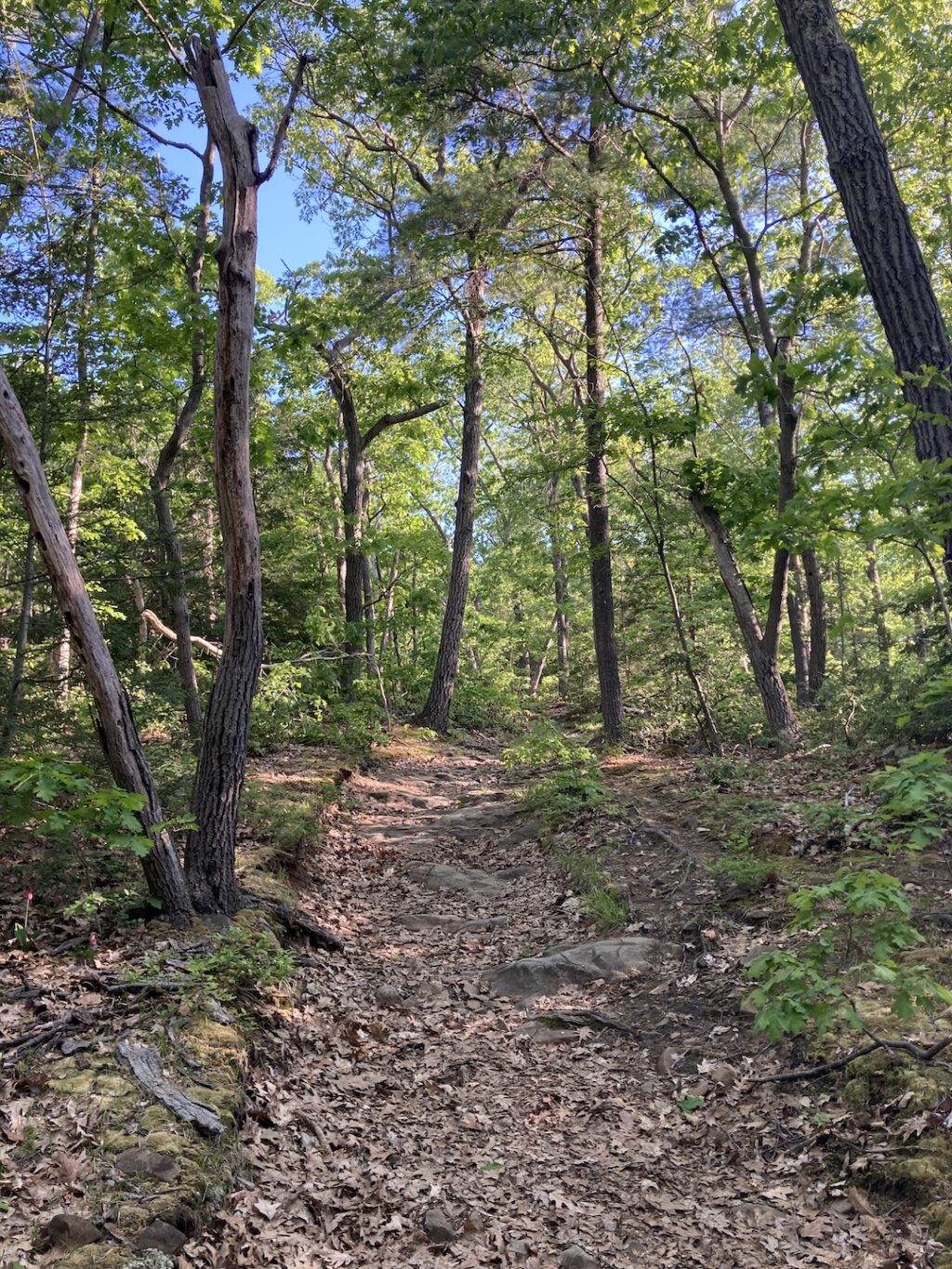
Early morning light filtering through oak trees growing on the south side of the Holyoke Range. Photo: Stephen Braun
It was only 28 degrees last Thursday morning, so I was bundled up with a hat, multiple layers, and winter gloves as I set off early for a hike on the south side of Mt. Holyoke. The birds seemed just as chipper and happy as ever, with the babbling brook song of a Rose-Breasted Grosbeak mingling with the clear fluting of a wood thrush as I walked along. I came across a millipede that may have been killed by the night’s frost—it was inert when I gently moved it—but it may also have just been in a state of protective torpor, since they can, reportedly, survive freezing temperatures.
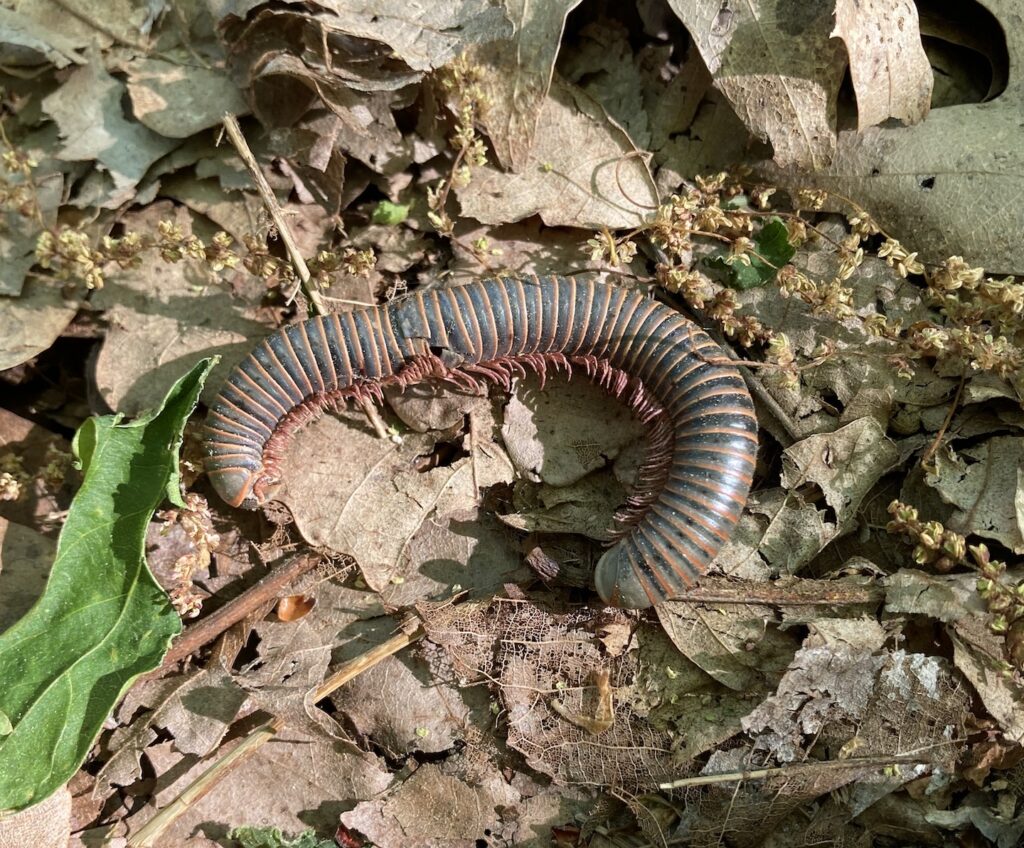
As I ascended on the Dry Brook Trail, I noticed on the ground many green spheres about the size and weight of ping pong balls.
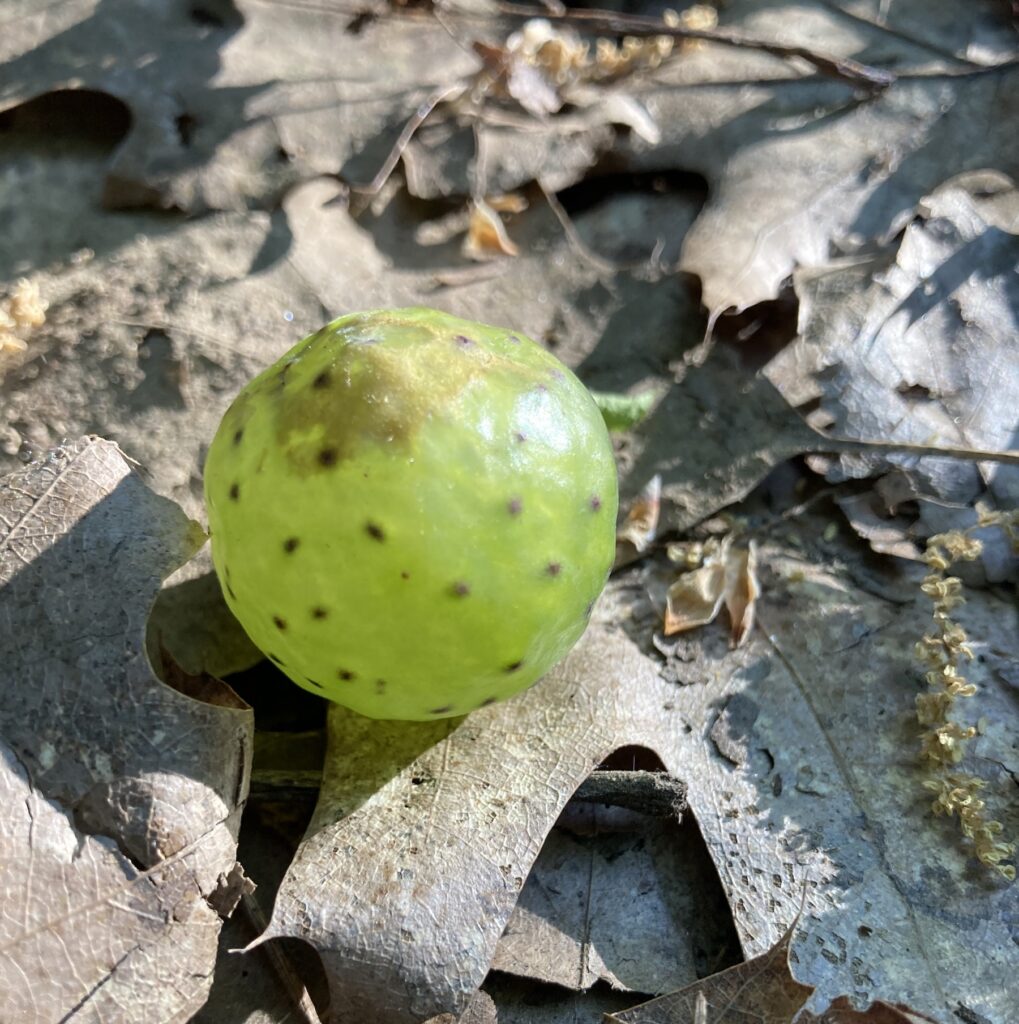
These intriguing structures are oak apples, also known as oak galls, and they are products of a remarkable interaction between certain species of oaks (in this case red oaks) and certain species of gall wasps in the Cynipidae family. Female gall wasps lay their eggs in the soft tissues of oak leaves, twigs, or buds. These small wasps don’t sting—they look more like flies than wasps. The egg-laying process induces the release of plant growth hormones and other biochemical signals that cause the plant tissues around the deposited egg to proliferate, somewhat like cancer, but in a highly structured and intricate way.
In the spotted oak apples I encountered, the leaf cells form a very thin external shell as well as a hairy interior capsule suspended in the center of the gall by many fine threads.
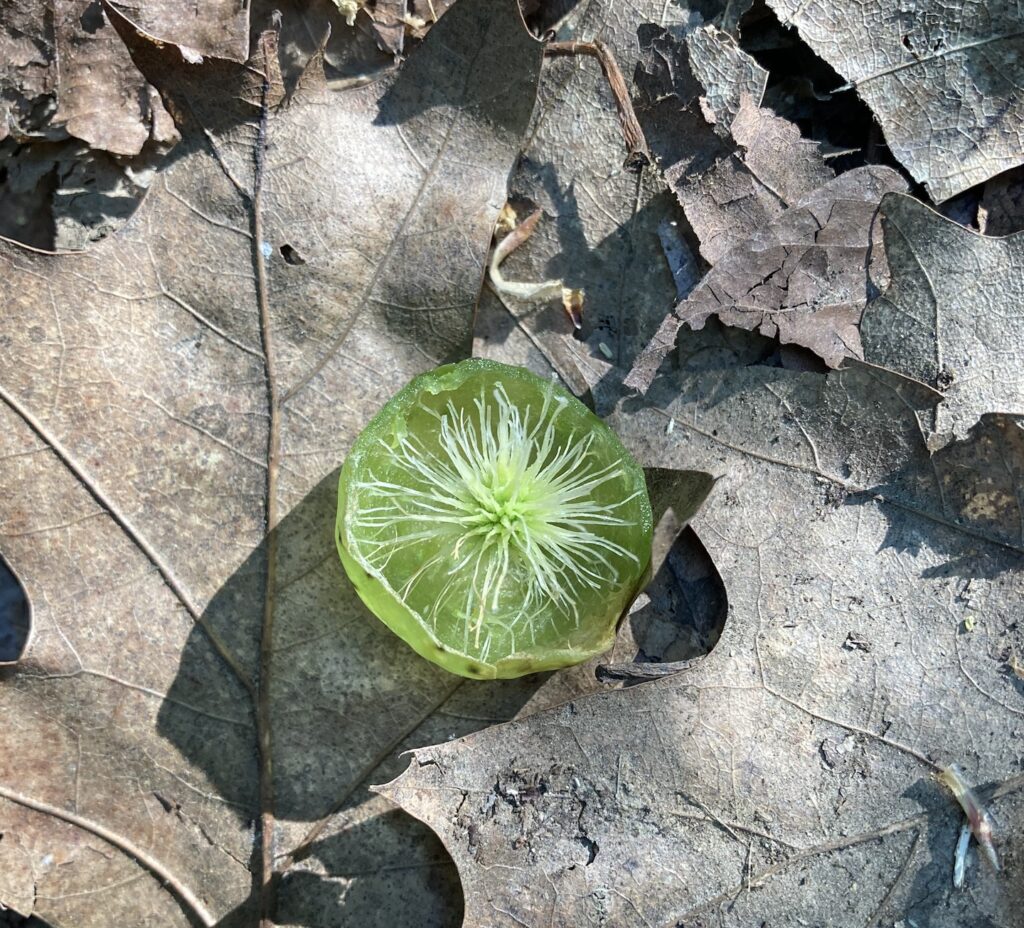
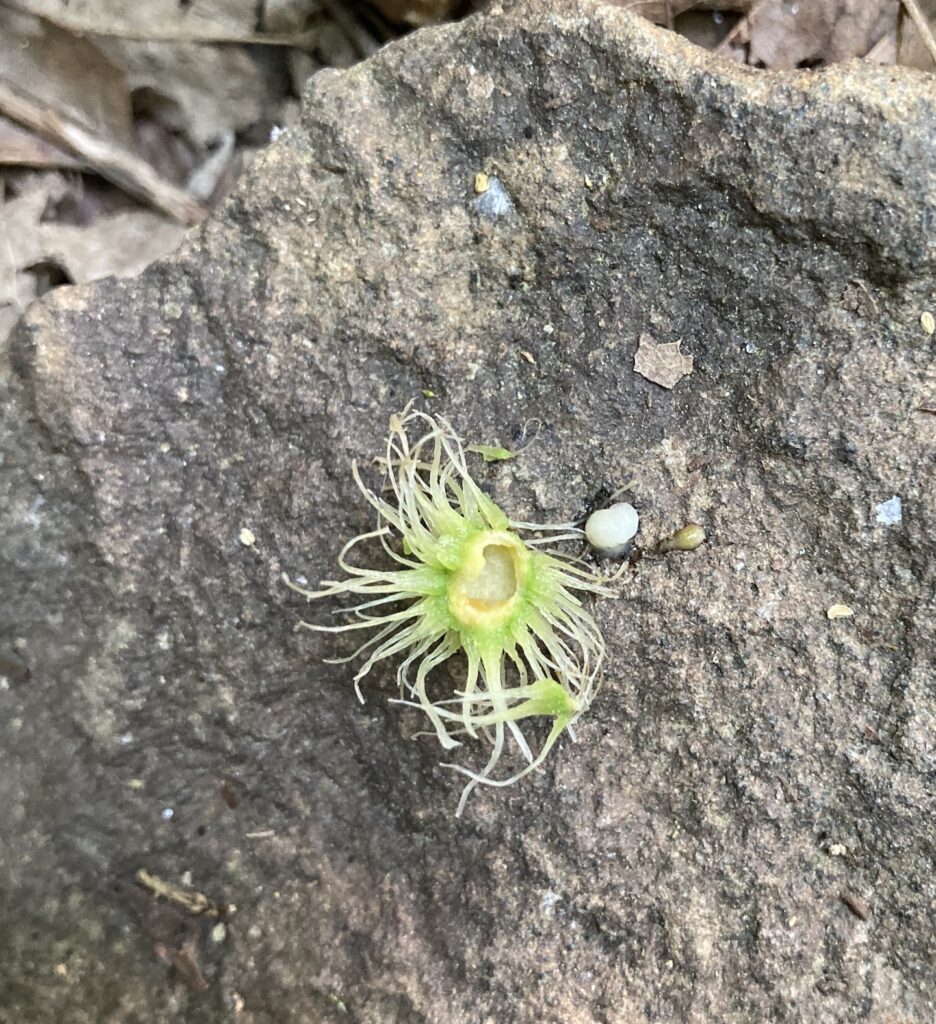
Exactly how the larval secretions manage to modify the genetics of the oak leaves to produce such complex and very non-leafy forms is still not fully understood, although a great deal is known—the problem being that you need to be a plant biologist to make much headway in the papers that have been written on the subject (for example, this one, from 2020).
Inside the Medusa-like capsule the tiny white larva feeds and grows. As the larva matures, the gall hardens. Once the wasp is fully developed, it chews its way out of the gall and flies off, leaving behind the empty gall with its small escape hatch hole. You can find the old, brown galls in the late summer and fall. The oak trees, in most cases, are not significantly harmed by the larvae or the galls.
The relationship between the oak tree and the gall wasp is a complex example of how species can co-evolve over time. The wasp has developed a unique method to ensure the survival and growth of its offspring, while the tree has adapted to tolerate the presence of the wasp eggs and the formation of the galls.
Almanac is a regular Indy column of observations, musings, and occasional harangues related to the woods, waters, mountains, and skies of the Pioneer Valley. Please feel free to comment on posts and add your own experiences or observations.

Nice! I missed this when it was first posted. Never having dissected an oak gall, I had no idea an insect larva was responsible, suspecting a virus instead….
Do other tree species develop similar structures, or is this peculiar to a small number of oak and wasp species?
Structures like these have long-fascinated me. Some plants grow very light, balloon-like pods which are readily blown in the wind to disperse the seeds (that gave my then-young son and me a good idea long ago
http://www.gang.umass.edu/~kusner/other/tumbleweed.html
— we never heard from anyone at NASA 🙂 ).
Has common genetic sequence evolved that codes for these hollow spheres? Or is it just physics and geometric optimization?
Hi Rob. Galls come in all shapes and sizes, including other hollow structures (e.g., goldenrod galls) but I suspect the structures develop via different kinds of cellular and genetic responses to the compounds secreted by either the wasp or the developing larvae. As for NASA, are you sure they didn’t listen? The landing sequence for an early Mars rover included the use of inflatable spheres to cushion the landing and protect the rover: https://mars.nasa.gov/mer/mission/technology/edl/ Not your idea, exactly, but certainly includes the idea of self-inflating balloons!